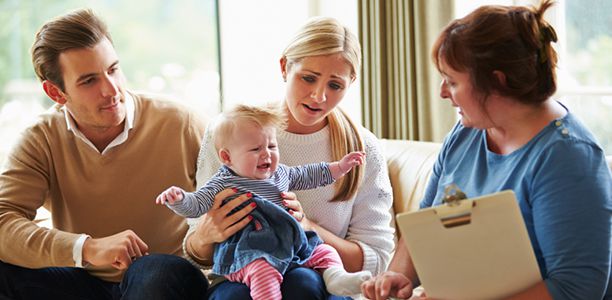Effective treatment in child protection must involve changing the behaviour of parents. This is at the heart of an early-intervention initiative aimed at working with parents as soon as they appear on the authorities’ radar.
Clinical psychologists will work with parents whose children have experienced maltreatment, or are regarded as at risk of maltreatment, including physical and emotional abuse and neglect, to interrupt a trajectory that might otherwise lead to the children’s removal from their parents.
“We know that maltreatment of young children has significant effects on their development … with implications for later mental and emotional wellbeing,” says clinical psychologist John McAloon, who has established a specialist family child behaviour clinic at the University of Technology Sydney (UTS).
“Ideally, we’d see parents after their first experience with the child protection system, such as when they’re the subject of a risk-of-significant-harm report or have appeared in court.
“There is good evidence that teaching parents how to parent can work. This is often something the parents have not had the chance to learn themselves. And we know that if we can keep families together and help them to function better, we can have a good impact on the outcomes of kids.”
The parents likely to be referred to the clinics may themselves have been subject to trauma or abuse; be suffering from mental illness or substance abuse; or have limited knowledge or understanding of effective and appropriate parenting, often as a result of their own family experience.
Wendy Foote, acting chief executive of the Association of Children’s Welfare Agencies, says parents who have themselves not had parenting, or who have had inadequate parenting, may experience problems in responding to their own babies, children and teenagers.
“What other parents experience as instinctual nurturing responses may have to be learnt, and the earlier this learning happens, the better for child and parent,” says Dr Foote.
“Those fundamentals of really attending to the baby – the keen focus on the baby, the ‘tuning into’ the baby’s physical and emotional state – will ensure the baby’s attachment is strong and secure.”
Dr McAloon says poor early attachment between parent and child is known to be implicated in significant developmental problems in children.
He says clinical psychologists have been good at addressing situations in which previously sound parent-child attachment is interrupted – by divorce, for example, or when a second child arrives and parental attention has to be shared.
“Where we haven’t been so good is translating research into effective programs to address poor early attachment, which is one of the benchmarks of maltreatment.”
The most recent figures from the Australian Institute of Health and Welfare (AIHW) show 143,000 children (2.7% of Australians aged 0 to 17) received child protection services. That was an increase of 6% on the previous year. In the same period, 13.7% of Indigenous children received child protection services.
With domestic/family violence high on the national agenda, any initiative with the potential to bolster the health and safety of children is welcome.
“It is important children don’t get left out of that conversation,” says Dr McAloon.
He says he wants to “capitalise on the knowledge we already have” in the use of evidence-based parenting programs.
“We often see the parents who have poor self-regulation who will fly off the handle and demonstrate behaviour that results in the child or infant … walking on eggshells and this has significant implications for their developing neurological systems,” he says.
“Behavioural problems typically result from maltreatment of children – and kids’ behaviour is one of the best indicators of adult mental health.”
Problems for the infant can even start in utero. For instance, maternal distress, such as that associated with domestic violence or in some mental health concerns, has implications for foetal development and later functioning.
Dr McAloon says there is also a need for greater creativity in how programs are delivered – using technology to cross the distance barrier, so effective child protection services can be made available to rural and remote communities.
For further information, visit the UTS Family Child Behaviour website.
(Source: University of Technology- Sydney)










